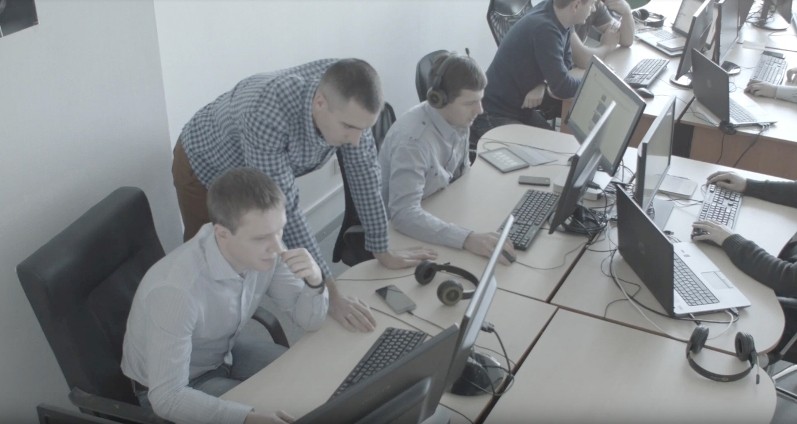When outsourcing your project to a remote software development team, the first question you should ask yourself is “which cooperation model should I choose?” Working in this industry for over 7 years, we at Eastern Peak have developed a unique approach to every project.
Depending on the client’s requirements and specifics of the project, we offer the following cooperation models:
- Fixed price
- Time and material
- Dedicated team
Each of them offers a number of unique benefits when applied to a specific type of project. However, there are also pitfalls in each case that you should be aware of. In order to help you make an informed decision, we have prepared a comprehensive guide for choosing a cooperation model that works best for you.
1. Fixed price model

When addressing a software development company, most clients already know how much they are willing or can afford to spend on their product. In this case, the fixed price model seems to be the most fitting.
As one can guess by its name, the fixed price model relies on a pre-defined budget and schedule. This means, you and your vendor agree on a fixed cost which you will be obligated to pay upon the delivery of the product, regardless of the actual project timeframe and expenses. This brings you the following benefits:
- A transparent and predictable development process, requiring minimum supervision from you.
- Regardless of the circumstances, fixed price project will be completed within agreed budget and timeframe.
- Your risks are minimized as the development team bears full responsibility for on-time and on-budget product delivery.
The approach seems to be fair and square: you don’t need to plan for additional expenses and your software development provider takes full responsibility for meeting deadlines and staying within your budget. If any unforeseen issues arise, you won’t have to worry about them.

On the other hand, it is very difficult to provide an accurate time and cost estimate or create a detailed project roadmap during the early stages of product development. In this regard, fixed price model has a number of drawbacks.
- Because fixed price projects typically require thorough planning and requirements analysis, product definition phase might take up to 40% of the product development time and investment. Thus, you will have to spend almost half of your budget before the team writes a single line of code.
- The team might overestimate the project on purpose in order to cover all possible risks. Consequently, you will have to pay more than the product is really worth.
- The quality of the product usually suffers as a result of shortcuts the team might make in order to meet deadlines. Every new problem might result in a lower quality product.
- Fixed price and timeframe results in lower flexibility. Any change to the initial requirements will require additional estimations and will increase the total budget.
Taking into account the above-listed pros and cons, the fixed price project model is most suitable for projects with a clearly defined scope and requirements that have been finalized. Therefore, this approach proves to be beneficial only for small projects that have limited functionality and clear deliverables, test or proof of concept tasks, as well as short-term cooperation with strict deadlines.
2. Time and material approach

Unlike the fixed price approach, the time and material model offers more flexibility in terms of both budget and project requirements. In this case, the total cost of the project, as well as its scope, remains unknown until the product is ready. It depends solely on the actual time and effort used to implement it.
While there is still planning and requirements specification involved, the T&M model allows you to change the scope and the milestones on the go. Thus, the actual product budget might differ from the initial estimate provided by the team.
- The time and material model provides increased flexibility in terms of project requirements, scope and functionality.
- This is the “pay as you go” approach, which means that you will be billed on a monthly (or weekly) basis as per the actual work done during the billable period.
- You have complete control over the budget and the timeframes and can change the scope and the priorities in order to stay on track.
The time and material approach often proves to be the most beneficial one in terms of time-and cost-efficiency. However, it also has a number of drawbacks that you should be aware of.
- The total budget for such a project is unknown until the product is finished. Your requirements might change at some point in the process, and the cost as well as the timeframe may also greatly vary.
- Due to its flexibility, the time and material model relies on small milestones, so the final deadline remains unclear as well.
- Such projects require constant supervision and your active involvement. It is necessary to keep track of the changing requirements and priorities throughout the process.
All in all, the time and material cooperation model finds its application in medium to large projects with dynamic requirements, ongoing adjustments and evolving product development.
It is a good fit for product improvements and technical support.
3. Dedicated team

Dedicated Team is a unique cooperation model that has something in common with both fixed price and T&M approaches. It provides you with a remote team of hand-picked software development professionals, assigned to your project on a long-term basis.
The main purpose of this model is to compensate for the lack of necessary skills and expertise in-house. You can manage the team yourself or engage a dedicated project manager to coordinate the communication process.
This approach has a very straightforward pricing model. A fixed service fee, which depends on the size of the team, is billed monthly. These payments cover members’ salaries and service provider’s fees, including administrative overheads.
Among the obvious advantages that the model can offer are:
- Predictable and transparent budgeting
- Flexible project scope
- Full control over the team and its processes
- Your team has a deep understanding of your project and business goals
- The team is fully dedicated to your project
The dedicated team model has several drawbacks as well.
- It is inefficient for short-term cooperation. If your project is estimated to take just a month or two, staffing a dedicated team may prove to be wasteful.
- Finding and engaging specialists with rare skillsets or specific industry/technology expertise might take some time (about 2 weeks on average).
- Team management also requires time and effort if you decide to do that yourself, without any help from a service provider.
Just like the time and material model, a dedicated team works best for long-term projects with undefined or evolving requirements. However, to reap all the benefits of this approach you need to make sure the scope of your project is sufficient so that all of your team members can work full time for several months.
| Fixed Price | Time & Material | Dedicated Team | |
| Project scope | Small | Medium & Large | Large |
| Project budget and timeframe | Fixed | Flexible | Flexible |
| Control over the process | Little | Significant | Full (personally or via dedicated PM) |
| Requirements | Defined | Evolving | Evolving |
| Methodology | Waterfall | Agile | Agile |
Wrapping up
As you can see, each one of the described approaches has its advantages and disadvantages. Choosing the best possible cooperation model completely depends on the specifics of your project.
If you have a long-term dynamic project, which requires close supervision from a professional project manager, we recommend hiring a dedicated team.
The time and material model works well for both large and medium projects, providing full control over the process and the budget.
The fixed price model is a good first step when building a reliable business partnership with a software development company, but can prove to be inefficient for long term projects.
If you are struggling to choose a cooperation model for your next project, contact us now to receive free consultation. We are always ready to help you bring your ideas to life.
Read also:
- How To Reduce App Development Cost
- How to Create a Mobile App Specification
- 5 Reasons to Outsource Only Top-Notch Startups Know About
- How much does it cost to make an app
- “I have an idea for an app, but my budget is limited.”
- Benefits of Outsourcing Mobile Application Development Over In-house Development
- Android vs iOS development: Which platform should I develop for first?



